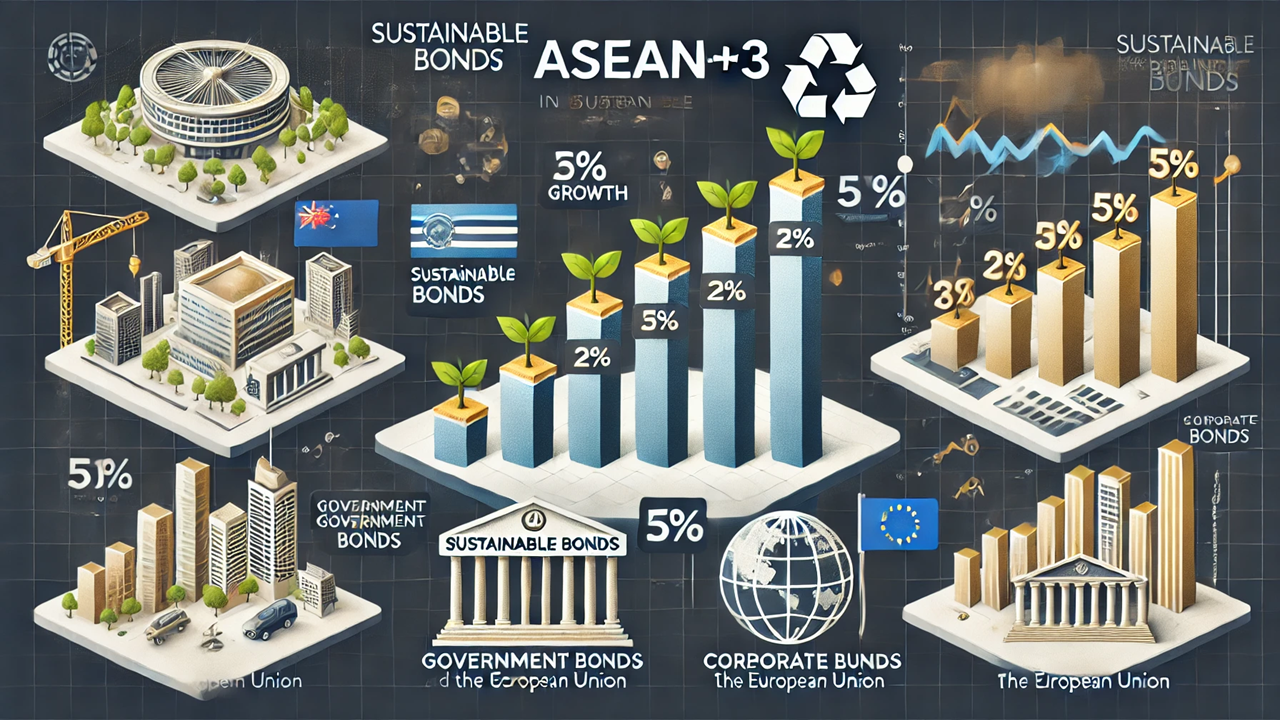East Asia's Bond Markets: Weathering Global Economic Storms and Embracing Sustainability
The Asia Bond Monitor for June 2024 by the Asian Development Bank reveals challenges and developments in East Asia's bond markets, highlighting impacts of US Federal Reserve policies, growth in sustainable bonds, and regional financial conditions. The report underscores the importance of adaptive policies to maintain stability and growth.

East Asia's bond markets are facing a complex landscape shaped by global economic policies and regional financial dynamics. The Asia Bond Monitor for June 2024, published by the Asian Development Bank (ADB), provides an insightful analysis of these developments, emphasizing the impacts of delayed US Federal Reserve rate cuts, local currency bond market performance, and the rise of sustainable bonds in the region.
Financial Conditions Under Pressure
From March to May 2024, financial conditions in emerging East Asia weakened significantly. The anticipated rate cut by the US Federal Reserve did not materialize due to slower-than-expected disinflation, leading to higher bond yields in both advanced economies and East Asian markets. This delay triggered bond outflows amounting to USD 20 billion during March and April, a substantial movement that shook the regional financial landscape.
The impact was also felt in currency markets, where regional currencies depreciated against the US dollar. Credit default swap spreads widened, reflecting heightened risk perceptions. The report underscores that uncertainties about the US monetary policy could support a strong dollar, causing additional outflows and currency depreciation in emerging East Asian markets. This environment pressures regional monetary authorities to maintain higher interest rates to stabilize their currencies.
Local Currency Bond Markets: Mixed Signals
Despite these challenges, the local currency (LCY) bond market in East Asia showed resilience, expanding by 1.4% quarter-on-quarter to reach USD 24.7 trillion at the end of Q1 2024. However, this growth rate was slower compared to the previous quarter, primarily due to a significant decline in government bond issuance in the PRC and Hong Kong, China.
Interestingly, corporate bond issuance remained robust in these markets, driven by easing measures aimed at boosting economic activity. Corporate bonds outstanding increased by 1.2% quarter-on-quarter, indicating strong investor confidence in the corporate sector's ability to navigate the current economic conditions.
Sustainable Bonds: A Growing Market
The sustainable bond market in the ASEAN+3 region continues to expand, reflecting a growing commitment to sustainable finance. By the end of March 2024, the market had grown by 21.4% year-on-year, reaching USD 805.9 billion. This growth outpaced both the European Union and the global market, positioning ASEAN+3 as a significant player in sustainable finance.
However, sustainable bond issuance in Q1 2024 contracted by 13.3% quarter-on-quarter, totaling USD 49.7 billion. This decline is attributed to expectations of higher-for-longer interest rates, which have made borrowing more expensive and dampened issuance activities. Despite this, the overall growth trajectory remains positive, supported by strong policy frameworks and investor interest in green and transition bonds.
Policy and Regulatory Developments
The report highlights several policy and regulatory developments aimed at enhancing market transparency and efficiency. Notably, advancements in the eXtensible Business Reporting Language (XBRL) disclosures in Japan are set to improve the transparency and materiality of environmental information. This initiative is expected to bolster investor confidence in sustainable bonds and support the broader sustainable finance agenda in the region.
Additionally, the development of taxonomies for sustainable finance, particularly in Japan and ASEAN, is paving the way for more structured and transparent markets. These frameworks are crucial for guiding investments towards projects that contribute to environmental sustainability and climate resilience.
The Asia Bond Monitor for June 2024 paints a comprehensive picture of the dynamic and evolving bond markets in East Asia. While global financial conditions and US monetary policy pose significant challenges, the region's commitment to sustainable finance and adaptive policy measures provide a pathway for continued growth and stability.
As East Asia navigates these turbulent waters, the emphasis on sustainable finance, robust policy frameworks, and market transparency will be key to maintaining investor confidence and supporting economic resilience.
- FIRST PUBLISHED IN:
- Devdiscourse










